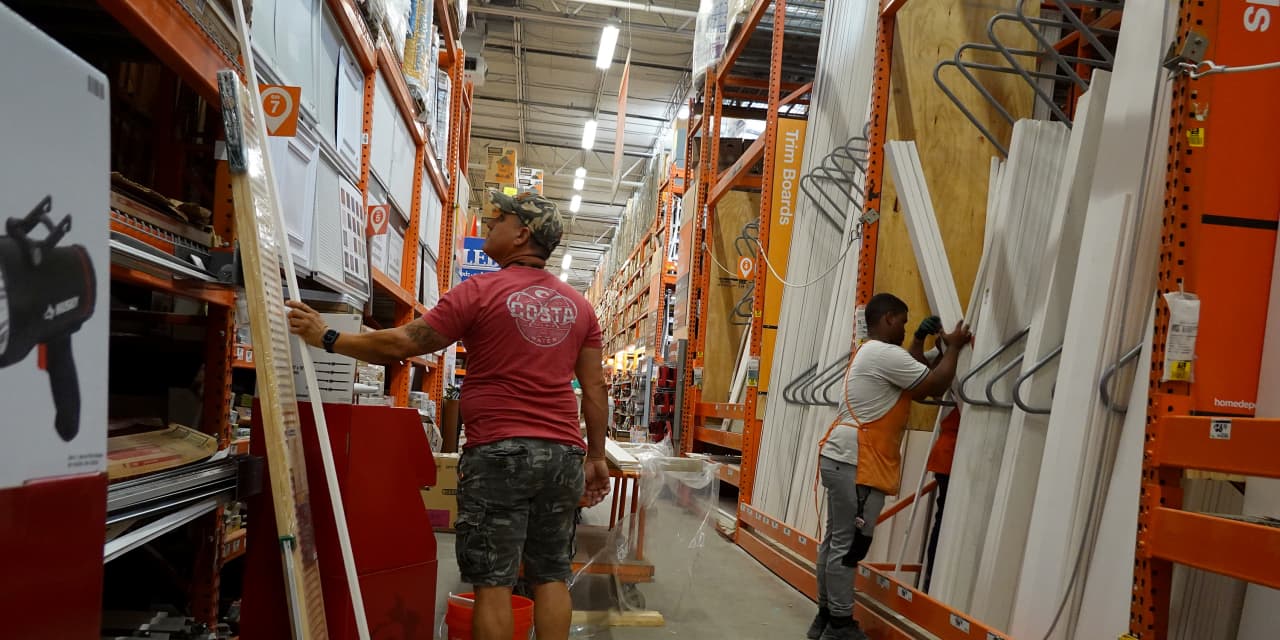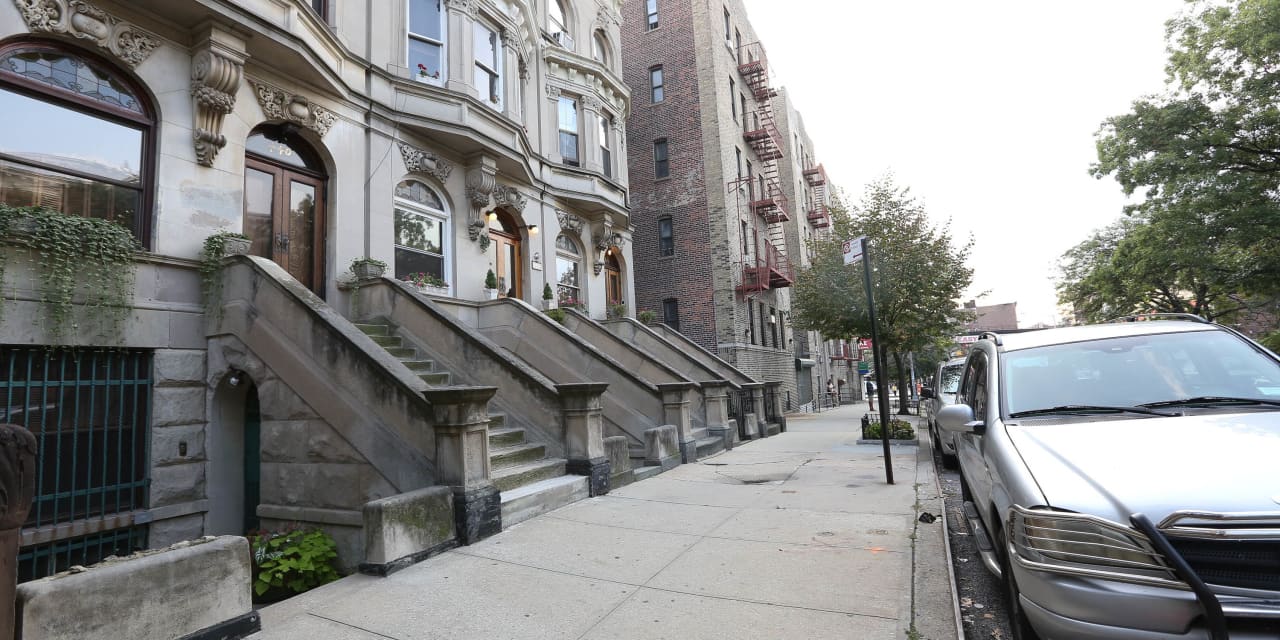Published: Feb. 23, 2024 at 5:33 a.m. ET
Shares of Tata Consultancy Services Ltd. 532540 inched down 0.84% to 4,051.95 Indian rupees Friday, on what proved to be an all-around rough trading session for the stock market, with the S&P BSE Sensex Index 1 falling 0.02% to 73,142.80.
Tata Consultancy Services Ltd. closed 132.60 rupees short of its 52-week high (4,184.55 rupees), which…
Shares of Tata Consultancy Services Ltd.
532540
inched down 0.84% to 4,051.95 Indian rupees Friday, on what proved to be an all-around rough trading session for the stock market, with the S&P BSE Sensex Index
1
falling 0.02% to 73,142.80.
Tata Consultancy Services Ltd. closed 132.60 rupees short of its 52-week high (4,184.55 rupees), which the company reached on February 9.
The stock underperformed when compared to some of its competitors Friday, as MphasiS Ltd.
MPHASIS
rose 1.08% to 2,727.60 rupees and Wipro Ltd.
WIPRO
rose 0.96% to 536.15 rupees.
Trading volume (171,592) eclipsed its 50-day average volume of 170,295.
Editor’s Note: This story was auto-generated by Automated Insights, an automation technology provider, using data from Dow Jones and FactSet. See our market data terms of use.
Published: Feb. 21, 2024 at 5:33 a.m. ET
Shares of Tata Consultancy Services Ltd. 532540 dropped 1.01% to 3,989.30 Indian rupees Wednesday, on what proved to be an all-around dismal trading session for the stock market, with the S&P BSE Sensex Index 1 falling 0.59% to 72,623.09.
Tata Consultancy Services Ltd. closed 195.25 rupees short of its 52-week high (4,184.55 rupees), which…
Shares of Tata Consultancy Services Ltd.
532540
dropped 1.01% to 3,989.30 Indian rupees Wednesday, on what proved to be an all-around dismal trading session for the stock market, with the S&P BSE Sensex Index
1
falling 0.59% to 72,623.09.
Tata Consultancy Services Ltd. closed 195.25 rupees short of its 52-week high (4,184.55 rupees), which the company achieved on February 9.
Despite its losses, the stock outperformed some of its competitors Wednesday, as MphasiS Ltd.
MPHASIS
fell 4.00% to 2,654.35 rupees and Wipro Ltd.
WIPRO
fell 1.98% to 521.40 rupees.
Trading volume (24,380) remained 150,722 below its 50-day average volume of 175,102.
Editor’s Note: This story was auto-generated by Automated Insights, an automation technology provider, using data from Dow Jones and FactSet. See our market data terms of use.
HSBC’s global banking and markets unit jumped 8% last year as the UK lender increased fees from dealmaking and maintained trading revenue in most asset classes.
The UK lender posted revenue of $16.1bn for its global banking and markets unit last year, according to its annual accounts. Fees from capital markets and M&A work surged 36%, with HSBC’s investment bank benefiting from a resurgence in debt underwriting revenue.
HSBC’s pre-tax profit of $30.3bn for 2023 was a record for the bank and an increase of 78%, but still below the $34bn expected by analysts. In a statement, chief executive Noel Quinn said that the results “reflected four years of hard work and the strength of our balance sheet in a higher interest rate environment.”
HSBC finished 16th in the investment banking fee league tables last year, according to data provider Dealogic, with 1.3% share of the market. This is up from 17th a year earlier.
The UK lender’s markets and securities services business posted revenue of $9bn, which was largely in line with 2022. However, equity trading fees of $552m were nearly half of the $1bn it earned in the unit in 2022.
HSBC’s GBM business dipped 4% in the final quarter of the year to $3.7bn.
READ HSBC hikes bonuses to $771,700 for its top investment bankers
HSBC has bolstered its UK investment bank over the past year, hiring two senior dealmakers for corporate broking in July, but faces stiff competition from Barclays, which is aiming to consolidate its first place finish in the UK dealmaking fee league tables last year. In recent months, hires within its investment bank have focused on its core markets of China and the Middle East.
Investment banks have struggled against an ongoing drought in deals, with Wall Street banks and Europeans alike posting sharp declines in M&A fees in 2023. UK rival Barclays unveiled a 12% decline in investment banking fees for 2023, led by a 23% slump in revenue from M&A work.
Barclays also unveiled its first investor day since 2014, separating its business into five key units including separating its investment bank from its corporate bank. While the UK lender will look to reduce its reliance on its investment bank, it is not pulling back and within its dealmaking team intends to shift the balance away from debt underwriting to do more M&A and equity capital markets work.
Deutsche Bank’s origination and advisory business was up by 25% in 2023, buoyed by a rebound in debt capital markets activity as its M&A unit slipped 25%. A hiring spree of 50 managing directors at the German lender last year aims to shift the balance of its investment bank towards more M&A and equity capital markets work.
To contact the author of this story with feedback or news, email Paul Clarke
Published: Feb. 19, 2024 at 5:33 a.m. ET
Shares of Tata Consultancy Services Ltd. 532540 inched down 0.67% to 4,101.60 Indian rupees Monday, on what proved to be an all-around positive trading session for the stock market, with the S&P BSE Sensex Index 1 rising 0.39% to 72,708.16.
Tata Consultancy Services Ltd. closed 82.95 rupees short of its 52-week high (4,184.55 rupees), which…
Shares of Tata Consultancy Services Ltd.
532540
inched down 0.67% to 4,101.60 Indian rupees Monday, on what proved to be an all-around positive trading session for the stock market, with the S&P BSE Sensex Index
1
rising 0.39% to 72,708.16.
Tata Consultancy Services Ltd. closed 82.95 rupees short of its 52-week high (4,184.55 rupees), which the company reached on February 9.
Despite its losses, the stock outperformed some of its competitors Monday, as MphasiS Ltd.
MPHASIS
fell 0.81% to 2,779.35 rupees and Wipro Ltd.
WIPRO
fell 1.30% to 535.95 rupees.
Trading volume (56,840) remained 118,238 below its 50-day average volume of 175,078.
Editor’s Note: This story was auto-generated by Automated Insights, an automation technology provider, using data from Dow Jones and FactSet. See our market data terms of use.
Published: Feb. 14, 2024 at 5:32 a.m. ET
Shares of Tata Consultancy Services Ltd. 532540 slid 1.16% to 4,101.00 Indian rupees Wednesday, on what proved to be an all-around favorable trading session for the stock market, with the S&P BSE Sensex Index 1 rising 0.37% to 71,822.83.
Tata Consultancy Services Ltd. closed 83.55 rupees below its 52-week high (4,184.55 rupees), which the…
Shares of Tata Consultancy Services Ltd.
532540
slid 1.16% to 4,101.00 Indian rupees Wednesday, on what proved to be an all-around favorable trading session for the stock market, with the S&P BSE Sensex Index
1
rising 0.37% to 71,822.83.
Tata Consultancy Services Ltd. closed 83.55 rupees below its 52-week high (4,184.55 rupees), which the company achieved on February 9.
The stock demonstrated a mixed performance when compared to some of its competitors Wednesday, as MphasiS Ltd.
MPHASIS
fell 2.61% to 2,559.85 rupees and Wipro Ltd.
WIPRO
rose 0.57% to 514.50 rupees.
Trading volume (15,191) remained 167,497 below its 50-day average volume of 182,688.
Editor’s Note: This story was auto-generated by Automated Insights, an automation technology provider, using data from Dow Jones and FactSet. See our market data terms of use.
New York Community Bancorp Inc. has been looking to shed problem commercial real estate from its books after last week reporting a surprising $185 million loss relating to a pair of loans as part of its fourth-quarter earnings results.
The lender has offered investors a chance to bid on a $22.4 million mortgage backed by three five-story walk-up apartment buildings in Washington Heights, a neighborhood in northern Manhattan, according to details of the offering viewed by MarketWatch.
The debt backs mostly rent-regulated apartments and affiliated mixed-use space. The mortgage matured in early January, with the full amount of the debt now due, plus interest at a 20% default rate, according to the offering.
Other landlords in the neighborhood who are subject to New York City’s rent-regulation laws, which were strengthened in 2019, have seen property values tumble by an estimated 50%, according to Bloomberg News.
New York Community Bancorp
NYCB
didn’t respond to requests for comment for this article.
Efforts by the bank to tackle its exposure to problem real-estate loans come as its stock has dropped by more than 60% so far this year.
The lender has a large exposure to rent-regulated multifamily properties in New York City, about a $1.8 billion office-building exposure in the city and about $250 million to $300 million in maturities in the next few years, according to Deutsche Bank researchers.
Pressures facing the bank are reigniting fears about regional banks and their commercial real-estate exposure. Treasury Secretary Janet Yellen told lawmakers on Tuesday that she was concerned about U.S. commercial real estate, saying that some institutions could be “quite stressed,” while also saying the challenge looks manageable.
Landlords have been reeling from slumping property prices and higher borrowing costs since the Federal Reserve in 2022 began dramatically raising interest rates to quell high inflation.
Many regional banks have responded by trying to quietly shed exposure to problem commercial real estate. That activity has picked up since the collapse of Silicon Valley Bank and Signature Bank last March and JPMorgan Chase & Co.’s
JPM
takeover of First Republic Bank, which deeply unsettled markets.
Late Tuesday, Moody’s Investors Service downgraded New York Community Bancorp’s credit by two notches into speculative-grade or “junk” status.
“We took decisive actions to fortify our balance sheet and strengthen our risk management processes during the fourth quarter,” Thomas Cangemi, New York Community Bancorp’s president and chief executive officer, said in a statement following the downgrade.
Cangemi also said that the bank has ample liquidity and has been growing its deposits and that the downgrade wasn’t expected to have a material impact on the lender’s contractual arrangements.
Sales of assets, even at a discount, can sometimes help banks get ahead of greater problems facing the industry, loan buyers said. But they also expect commercial-real-estate lenders to endure a challenging few years, especially as a wall of old debt comes due at a time of higher interest rates.
See: ‘No one is throwing good money after bad.’ Why 2024 looks like trouble for commercial real estate.
Published: Feb. 5, 2024 at 5:32 a.m. ET
Shares of Tata Consultancy Services Ltd. 532540 inched up 0.16% to 3,972.75 Indian rupees Monday, on what proved to be an all-around poor trading session for the stock market, with the S&P BSE Sensex Index 1 falling 0.49% to 71,731.42.
Tata Consultancy Services Ltd. closed 9.30 rupees below its 52-week high (3,982.05 rupees), which the company…
Shares of Tata Consultancy Services Ltd.
532540
inched up 0.16% to 3,972.75 Indian rupees Monday, on what proved to be an all-around poor trading session for the stock market, with the S&P BSE Sensex Index
1
falling 0.49% to 71,731.42.
Tata Consultancy Services Ltd. closed 9.30 rupees below its 52-week high (3,982.05 rupees), which the company reached on February 2.
The stock outperformed some of its competitors Monday, as MphasiS Ltd.
MPHASIS
fell 2.33% to 2,500.65 rupees and Wipro Ltd.
WIPRO
fell 0.17% to 482.35 rupees.
Trading volume (126,912) remained 57,824 below its 50-day average volume of 184,736.
Editor’s Note: This story was auto-generated by Automated Insights, an automation technology provider, using data from Dow Jones and FactSet. See our market data terms of use.




